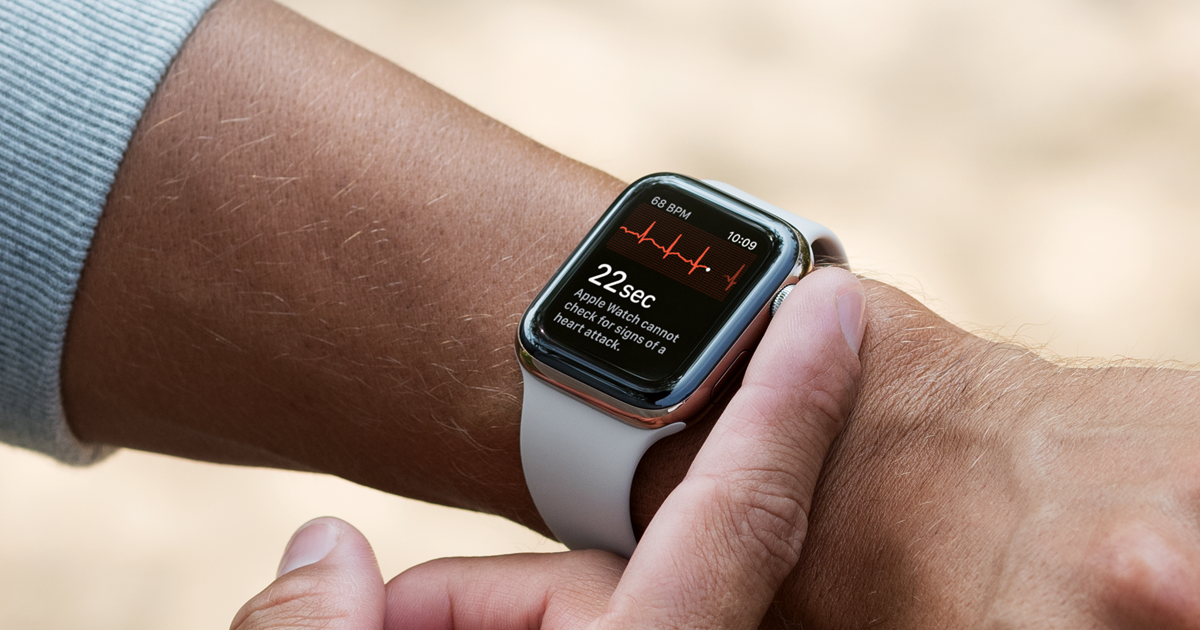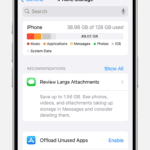Your Apple Watch battery health matters. Checking and maintaining your Apple Watch’s battery health can extend its lifespan and keep it running smoothly. The watch’s battery percentage and maximum capacity are key indicators of its overall health.
Apple Watch users can easily access battery health information in the settings app. This data helps you understand how well your battery is performing and when it might need attention. A healthy battery should maintain 80% or more of its original capacity.
To maximize your Apple Watch’s battery life, you can use features like Optimized Battery Charging and Low Power Mode. These tools help reduce battery aging and extend usage time between charges. Regular monitoring of your watch’s battery health ensures you stay connected throughout the day.
| Battery Health Indicator | Good | Fair | Poor |
|---|---|---|---|
| Maximum Capacity | 80-100% | 60-79% | Below 60% |
| Battery Percentage | 100-20% | 19-10% | Below 10% |
Understanding Apple Watch Battery Life
Your Apple Watch is a powerful tool for staying connected, tracking your fitness, and more. But like all devices with batteries, its battery life will degrade over time. Let’s explore some key factors about Apple Watch battery health.
What is Battery Health?
Battery health is a measure of your battery’s capacity compared to when it was new. A new Apple Watch has a battery health of 100%. As your watch ages, this number will decrease. This is a normal part of any battery’s lifespan.
Factors Affecting Battery Health
Many factors can affect the health of your Apple Watch battery. These include:
- Charging Habits: How often you charge your watch and the type of charger you use can impact battery health.
- Usage: Using features like GPS, always-on display, and cellular data can drain your battery faster, leading to more frequent charging cycles.
- Temperature: Exposing your Apple Watch to extreme temperatures can also affect its battery life.
- Age: Like all batteries, your Apple Watch battery has a limited lifespan. It will naturally degrade over time, even with proper care.
Checking Your Apple Watch Battery Health
It’s easy to check your Apple Watch battery health. Here’s how:
- On your Apple Watch, press the Digital Crown to go to the home screen.
- Tap the Settings app (the gear icon).
- Scroll down and tap on Battery.
- Tap on Battery Health.
You’ll see a percentage that indicates your current battery health. You’ll also see if your battery is performing at its peak performance capability.
Understanding Battery Health Percentage
Here’s a general guideline for interpreting your battery health percentage:
| Battery Health | Meaning |
|---|---|
| 100% – 80% | Your battery is in good condition and is performing at its optimal capacity. |
| 80% – 60% | Your battery is showing normal signs of wear and tear. You might notice slightly reduced battery life. |
| 60% – 40% | Your battery’s capacity is significantly reduced. You’ll likely experience shorter battery life and may need to charge your watch more frequently. |
| 40% or below | Your battery is nearing the end of its lifespan. You should consider replacing the battery to restore performance. |
Tips to Maximize Battery Life
- Optimize Settings: Adjust screen brightness, turn off always-on display, and limit notifications to conserve battery.
- Manage Apps: Close apps you’re not using and limit background app refresh.
- Use Power Saving Mode: When needed, activate Power Saving Mode to extend battery life during workouts.
- Avoid Extreme Temperatures: Don’t leave your Apple Watch in direct sunlight or in very cold environments.
- Update Software: Keep your Apple Watch software updated, as updates often include battery optimization features.
Understanding Apple Watch Battery Health
Apple Watch battery health reflects its current capacity compared to when it was new. Knowing your watch’s battery health helps you manage usage and decide if replacement is needed.
Determining Battery Health
You can easily check your Apple Watch’s battery health. Press the Digital Crown and open Settings. Tap Battery, then select Battery Health. The screen displays your battery’s maximum capacity as a percentage.
A new watch shows 100% capacity. As the battery ages, this number decreases. Apple Watch alerts you if capacity drops significantly. This allows you to review service options if needed.
Regular checks help you track changes over time. If capacity falls below 80%, consider a battery replacement to maintain optimal performance.
Factors Affecting Battery Lifespan
Several factors impact your Apple Watch battery’s longevity:
- Charging habits
- Usage patterns
- Environmental conditions
Optimized charging helps extend battery lifespan. This feature learns your daily routine and delays charging past 80% until you need to use the watch.
Heavy use of power-hungry features like GPS and cellular data can accelerate battery aging. Extreme temperatures also affect battery health. Avoid exposing your watch to very hot or cold conditions.
| Factor | Impact on Battery |
|---|---|
| Frequent full discharges | Negative |
| Optimized charging | Positive |
| Extreme temperatures | Negative |
| Heavy feature usage | Negative |
By understanding these factors, you can take steps to preserve your Apple Watch’s battery health and extend its overall lifespan.
Maximizing Battery Life and Longevity
Proper settings and charging habits can greatly extend your Apple Watch’s battery life and health. These practices help maintain optimal performance and longevity.
Settings to Preserve Battery Health
Low Power Mode is a key feature to save battery life. Enable it when your battery is running low or during long periods of inactivity.
Turn off the Always On display. This setting can significantly reduce battery drain. Go to Settings > Display & Brightness > Always On and toggle it off.
Adjust brightness levels. Lower brightness conserves power. Access this in Settings > Display & Brightness.
Disable unnecessary notifications. Fewer alerts mean less battery use. Manage these in the Watch app on your iPhone.
Use Wi-Fi instead of cellular when possible. This reduces power consumption for cellular models.
| Setting | Battery Impact |
|---|---|
| Low Power Mode | High |
| Always On Display | High |
| Brightness | Medium |
| Notifications | Medium |
| Cellular Usage | High |
Best Practices for Charging
Optimized Battery Charging helps slow battery aging. Your watch learns your charging habits and waits to charge past 80% until you need it.
Avoid extreme temperatures when charging. Heat can damage the battery. Keep your watch in a cool, dry place while it charges.
Don’t let the battery drain completely. Try to charge before it drops below 20%.
Remove the watch from its charger once it reaches 100%. Overcharging can stress the battery.
Use the original Apple charger or certified alternatives. Low-quality chargers may damage your battery.
Check your battery health regularly. Go to Settings > Battery > Battery Health on your watch. If capacity drops significantly, consider a battery service.
Monitoring and Managing Battery Performance
Keeping track of your Apple Watch battery health is crucial for optimal performance. Regular monitoring and proper management can extend your device’s lifespan and ensure it’s ready when you need it.
Using the WatchOS and iPhone to Track Battery Health
You can easily check your Apple Watch’s battery health through the Settings app. Open Settings, tap Battery, then select Battery Health. This screen displays your battery’s maximum capacity as a percentage of its original capacity.
To view more detailed usage information, use your paired iPhone. Open the Watch app, go to My Watch, then tap Battery. Here you’ll find a breakdown of app usage and battery drain over time.
The Control Center on your Apple Watch offers a quick way to check current battery level. Swipe up from the watch face to access it. You can also add a battery complication to your watch face for constant visibility.
Interpreting Battery Notifications
Your Apple Watch sends notifications when battery levels are low. At 10% remaining, you’ll receive an alert suggesting you charge soon. When the battery drops to 5%, another notification prompts you to enter Power Reserve mode.
Battery capacity alerts may appear if your watch detects significant degradation. These notifications indicate it’s time to consider battery service options.
| Battery Level | Action |
|---|---|
| 100% – 20% | Normal use |
| 10% | Charge soon |
| 5% | Enter Power Reserve |
Pay attention to these notifications. They help you avoid unexpected shutdowns and maintain your watch’s functionality throughout the day.
Troubleshooting Common Battery Issues
Apple Watch battery problems can be frustrating. Quick fixes and timely replacements can keep your device running smoothly.
Addressing Rapid Battery Drain
If your Apple Watch battery drains too fast, try these steps:
- Update to the latest watchOS version
- Reduce screen brightness
- Turn off background app refresh
- Disable “Hey Siri” when not needed
- Limit notifications
Restart your watch if issues persist. Some users reported battery drain after watchOS 11 updates. If this happens, report feedback to Apple.
Check which apps use the most power:
- Open Settings on your watch
- Tap Battery
- Scroll down to see app usage
Close power-hungry apps when not in use.
When to Consider Battery Replacement
Consider replacing your Apple Watch battery when:
- It drops below 80% capacity
- It can’t hold a charge for a full day
- The watch shuts down unexpectedly
- Open Settings on your watch
- Tap Battery, then Battery Health
| Battery Health | Status | Action |
|---|---|---|
| 100-80% | Good | Normal use |
| 79-60% | Fair | Monitor closely |
| Below 60% | Poor | Consider replacement |
Apple offers battery service options. Contact Apple Support or visit an Apple Store for professional replacement. Third-party repairs may void your warranty.
Frequently Asked Questions
Apple Watch battery health affects device performance and longevity. Understanding how to check and maintain battery health helps users get the most out of their smartwatches.
How do I know if my Apple Watch battery needs replacing?
You can check your Apple Watch battery health in the Settings app. Go to Battery > Battery Health. If the maximum capacity drops significantly below 80%, it may be time to consider a replacement.
What is a good battery health for an Apple Watch?
A good battery health for an Apple Watch is 80% or higher. This indicates the battery can still hold a substantial charge compared to when it was new.
How do I check my Apple battery health?
To check your Apple Watch battery health:
- Open the Settings app on your watch
- Tap Battery
- Tap Battery Health
You’ll see the maximum capacity percentage of your battery relative to when it was new.
How to check Apple Watch battery percentage on iPhone?
You can check your Apple Watch battery percentage on your iPhone:
- Open the Watch app on your iPhone
- Tap My Watch
- Scroll down to see the battery percentage
This method is useful when your watch isn’t nearby.
At what battery health percentage should an Apple Watch battery be replaced?
Apple recommends considering a battery replacement when the maximum capacity falls below 80%. At this point, you may notice decreased performance and shorter battery life.
What practices help maintain optimal Apple Watch battery health over time?
To maintain Apple Watch battery health:
- Update your watchOS regularly
- Avoid extreme temperatures
- Use optimized battery charging
- Don’t let the battery drain completely
These habits can help extend your watch’s battery lifespan.
| Practice | Benefit |
|---|---|
| Regular updates | Improves efficiency |
| Avoid heat/cold | Prevents capacity loss |
| Optimized charging | Reduces battery aging |
| Avoid full discharge | Maintains cell health |







